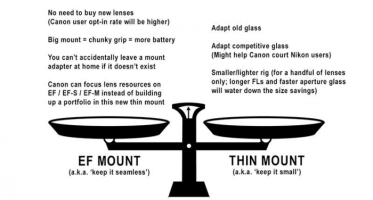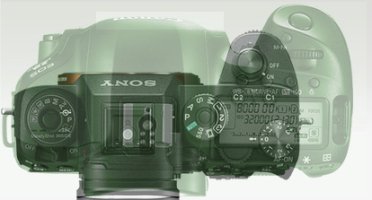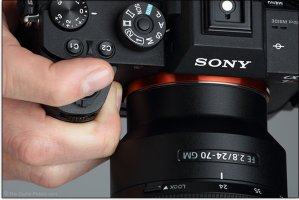TAF said:Brown said:TAF said:Brown said:CarlMillerPhoto said:God I hope Canon stands out from the pack and offers a mirrorless body with a native EF mount.
Then what's the point of it being mirrorless?
All the advantages of mirrorless (fast frame per second rate; live view; no vibration; no noise; a bit lighter without the heavy prism and mirror box; the potential for advanced display info; all hopefully without the need for 'chimping'), without the added expense of new lenses.
Can't most of that be achieved with mirror lockup and an electronic shutter?
I fail to see the issue to using what amounts to an extension tube for legacy support as in the case of the EOS-M series.
1. Most, but not all (and not the best parts). Note the 'no chimping' advantage of mirrorless, which obviously cannot be achieved with a regular mirrored camera with the mirror locked up, as well as a weight savings. Hence making mirrorless (with an EVF) more desirable.
2. The extension tube (as seen in the M series) is a) a potential failure point, b) something to be misplaced, c) something that can adversely affect the quality of the image unless the tube is extremely well made (and hence expensive - the plane of the two mounts must be exactly parallel, which is not that easy to achieve), d) a potential admission by Canon that they aren't really ready for a new mount system, which has psychological implications for sales. Just look at all the EOS-M lenses they have made...
Since the only reason for a new mount would be to make the camera thinner, at the expense of all of the above objections, it would seem a bad idea to go there.
We shall (hopefully) soon see.
I'm sure there will be FF mirrorless cameras from Canon in the future with both EF mount and a different mount (EF-M or something else).
I don't really understand the problem of adaptors assuming they're made well enough.
People are:
"I want native EF mount because all my lenses are EF mount"
and
"I don't want an adaptor because what if I leave it at home? Lose it?"
Well... If all your lenses are EF mount, KEEP THE ADAPTOR ATTACHED TO YOUR BODY AT ALL TIMES!. Duh...
And we can be certain that any adaptor for EF lenses is going to be a lot more sophisticated than the EF-EF-M adaptor currently being sold. I'd expect weather sealing and a very much more secure locking mechanism to the body at a minimum.
Upvote
0





